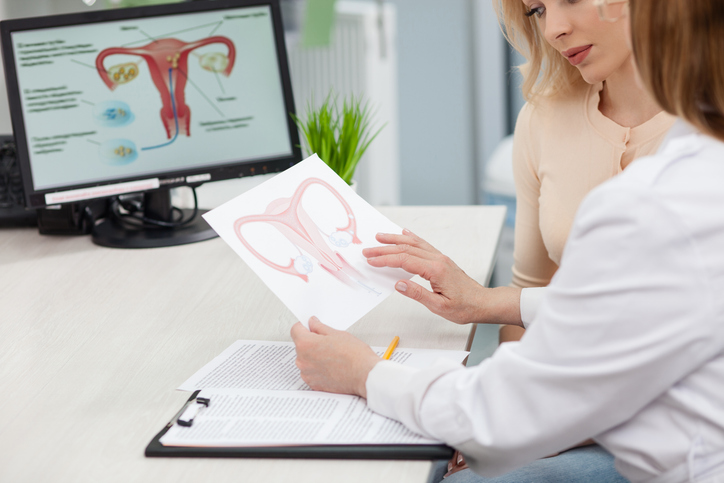
A hysterectomy is a surgical procedure that removes the uterus. After a hysterectomy, there will be no more periods, and it is impossible to get pregnant again. There are different types of hysterectomies, some of which also remove other organs like the ovaries or fallopian tubes. There are multiple reasons for getting a hysterectomy including:
- Endometriosis
- Uterine prolapse (uterus slips down through the vagina)
- Abnormal/ heavy vaginal bleeding
- Cancer of the cervix, ovaries, or uterus
- Uterine fibroids (non cancerous tumors)
- Unmanageable pelvic pain
- Gender-affirming surgery
For many of the reasons listed above, such as endometriosis, hysterectomies are often the last resort if all prior treatments have been ineffective. It is important to note that removal of just the uterus will not cause a change in hormones, including menopause, as the ovaries are still intact.
Depending on the reason for hysterectomy there are different options from which to choose.
Total/full hysterectomy
This procedure removes the entire uterus and the cervix. This option is recommended for people with conditions that affect the cervix, such as cervical cancer. Benefits of a full hysterectomy include:
- Elimination of Cervical Cancer Risk: Removing the cervix eliminates the possibility of developing cervical cancer, because there is no cervix.
- Complete Treatment: For conditions like severe endometriosis or chronic pelvic pain, a total hysterectomy may provide more overall relief.
Partial Hysterectomy
This procedure only removes the top part of the uterus, and the cervix remains. This option is often chosen when the cervix is healthy and does not pose any immediate health risks. Benefits of a partial hysterectomy include:
- Reduced surgical time: The procedure is generally less intense, which can reduce surgical risks and leave you with a shorter recovery time.
- Keeping the cervix: Some people prefer to keep their cervix for sexual pleasure.
Oophorectomy
This means removal of the ovaries and may be done with a hysterectomy.
The ovaries produce essential hormones like estrogen and progesterone, both of which play a vital role in a woman's overall health. If there are no ovaries, there are no hormones being produced.
- Once the ovaries are removed, the body will enter menopause, no matter the age.
- Younger people may prefer to retain their ovaries to avoid early menopause and its associated symptoms and risks.
- Keeping the ovaries allows for continued natural hormone production, which can be beneficial for bone health, cardiovascular health, and overall hormonal balance.
The cervix...to keep or not to keep?
The main reason to get rid of the cervix is if the cervix is unhealthy in some sort of way, or could be unhealthy down the line, such as eliminating the risk for cervical cancer. For some, the cervix may increase sexual pleasure and play a role in arousal and orgasm.
A hysterectomy is multifaceted, and there are many things to discuss with your provider, such as the method of surgery. One surgical option is removal of the uterus via the vagina, the other is from an incision in the abdomen, possibly even laparoscopically. These surgeries differ in risks and benefits, and at Northfield Hospital + Clinic our providers can help guide you in the decision of whether or not to remove the ovaries or cervix and what the best surgical method is for you.
